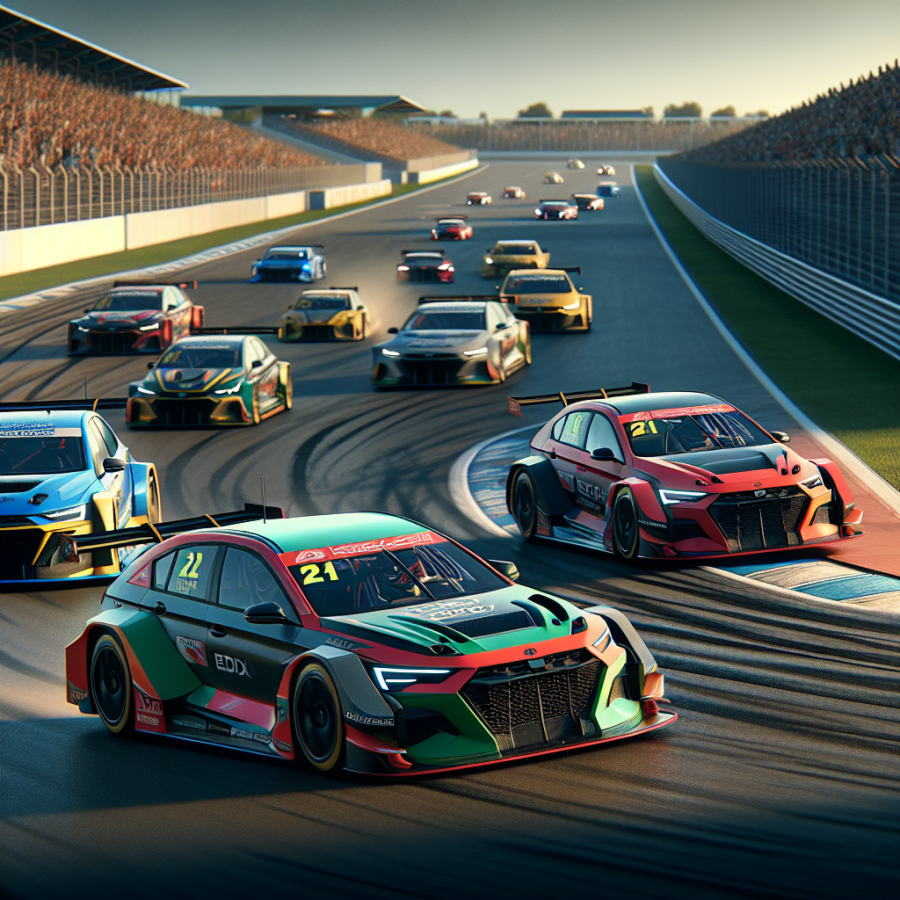Navigating the High-Octane World of Touring Car Racing: An Intimate Glimpse
Navigating the high-octane world of touring car racing requires a unique blend of skill, strategy, and sheer nerve. At the heart of this adrenaline-pumping motorsport are the touring car championships—competitive, fast-paced realms where drivers pilot production-based cars that are modified to extract maximum performance.
One of the defining characteristics of touring car racing is its accessibility. Unlike some other forms of motorsport that feature highly specialized and unobtainable machinery, touring cars resemble vehicles that you might see on the road, albeit with significant performance enhancements. This inherent relatability draws a diverse array of fans to the sport.
The cars themselves are marvels of engineering. Teams spend countless hours fine-tuning engines, suspensions, and aerodynamics to shave fractions of a second off lap times. The regulations governing these modifications are strict, with balancing measures in place to ensure that no single car has a disproportionate advantage, keeping the field competitive and the racing close.
Close-quarter battles are a signature of touring car championships. Racers jockey for position, often trading paint as they navigate the twists and turns of circuits that can be unforgiving. This aggressive racing style can lead to dramatic clashes and occasional confrontations, but it's all part of the spectacle that keeps fans on the edge of their seats.
The drivers are a rare breed, blending aggression with precision. Behind the wheel, a cool head prevails, as they must know when to push their car to the limit and when to hold back, conserving tires and brakes for the opportune moment to launch an attack. Physical fitness is paramount, as the g-forces and heat within the cockpit test the limits of human endurance.
Strategy also plays a crucial role in this motorsport. Teams must decide on the best time to pit, the optimal setup for each track, and how to react to the ever-changing conditions of a race. The difference between victory and defeat can often come down to a split-second decision made in the heat of competition.
Touring car racing is as much a team sport as it is an individual challenge. The synergy between driver, vehicle, and crew is palpable. The mechanics and support staff work tirelessly to ensure that their car is capable of winning, while the driver must extract every ounce of potential from it during a race.
The atmosphere at these events is electric.
Read also:
The Thrilling Adventure of Wakeboarding: A Comprehensive Guide for Beginners
Behind the Wheel with the Heroes of Touring Car Championships: A Front-Row Experience
Touring car championships have always been celebrated for their close combat and highly competitive atmosphere. Unlike their high-speed counterparts, touring cars are more relatable to the vehicles we see on the roads, yet they pack a performance punch that could rival many of their track-based siblings. This proximity to everyday cars creates an allure and a connection for fans that many other motorsport disciplines can't match. But what's it truly like to sit behind the wheel of these modified road-going monsters? Our exclusive interviews with some of the drivers give us a front-row experience of the fortitude, intensity, and precision required in this electrifying sport.
To understand the heroes of touring car championships, we must first step into their shoes—or more fittingly, their driver's seats. Inside these cockpits, the environment is far from the comfort of a luxury sedan. Instead, we find a sparse, purpose-built interior designed for safety and speed. Roll cages envelop the driver, switch panels replace the typical dashboard features, and every single element within has one aim: to keep the driver laser-focused on the track ahead.
As the lights go out and the race begins, the experience is nothing short of electrifying. From the driver's perspective, every start is a mixture of controlled aggression and precision. Unlike open-wheelers where power and aerodynamics often dictate the race rhythm, touring car drivers emphasize elbow-to-elbow racing, where grit and quick-witted maneuvers are dominant. Our drivers tell us that wheel-to-wheel battles are common, and it's not just about how fast you can go, but also how smartly you can defend your position and capitalize on others' mistakes.
One of the most thrilling aspects that the drivers highlight is the braking zones. Touring cars are heavier and often have less downforce than other racing cars, which means that braking late into a corner can sometimes be as much about bravery as it is about tactics. It's here that races can be won or lost, they say. The ability to outbrake competitors, plant the car on the apex, and power through the exit is a dance that combines finesse with raw mechanical sympathy.
Tire management is also a critical skill discussed by the drivers. Modern touring cars might not seem as demanding as endurance prototypes or single-seaters when it comes to aerodynamics and power, but they exert immense strain on their tires due to their weight and the tight, twisting nature of the circuits.




